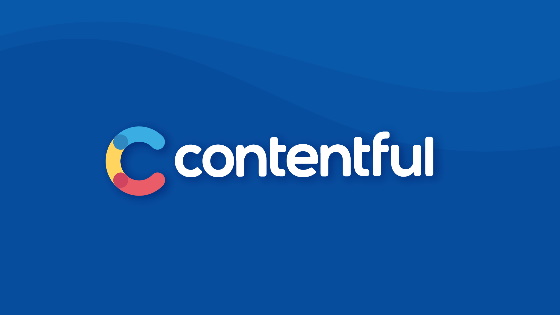In this tutorial, you will learn a little more about Contentful CMS and some considerations you will need to make when using their free pricing plan. One thing that entices a lot of people to pick Contentful CMS to power their website is that it comes with a free plan. We all love Freemium, however, we all seem to prefer it when we do not have to pay anything 💸.
Like all free plans, the Contentful free pricing tier has limitations. In this guide, I will explain what these limitations are and how those limits could impact your software project. You will learn how the free plans constrictions have personally affected me while building projects for clients. These are the battle-worn, practical considerations that I think you should be aware of before picking Contentful as a CMS.
I should start this article by saying that I am a fan of Contentful CMS. I think Contentful is a great choice for certain projects. Even though the focus of this article is on the limitations of the free pricing tier, it is not meant to be a guide to put you off. I have used it to power many clients websites and I still recommend it.
The reason for this guide is that when a few of my clients have had to go from the free pricing model to the paid pricing model, some people can get a bit grumpy. The typical scenario when this happens is just after the initial build. Initially, Contentful is identified as a great platform and the free pricing tier gives the client everything they need. Shortly after releasing the website, the client asks for some bigger and better capabilities on the site. Even though you might have made them aware at the start of the process of the limitations of the free pricing plan, they can get an unhappy shock when the costs increase. If a client is unaware of what they may need to pay in the future, this can lead to tensions and awkward conversations.
This is why in this guide, I will explain the practical limitations of the plan, to hopefully make the world a more peaceful place ✌️
Licensing: The first thing to make a client aware of is the jump in price. You can start to use Contentful CMS for free, which is 🥰. Unfortunately, there is no small step up from the free pricing model to the next level. Some companies might be big ballers and this price hike might not be an issue. For a lot of companies, the ContentFul pricing jump might come as a shock 😱😱😱

The Contentful CMS pricing model goes from the free tier to the premium tier. The price of the premium tier is $500 a month. There is another level above the premium plan, enterprise. Contentful does not advertise the enterprise plans costs on their site, however, I know this plan can start from roughly $4000 a month. This is why that it's key for a company to understand what ContentFul will do and what it will not do before picking it.
Be aware that if you hit the limits of the free plan, your CMS bill will jump from $0 to $6000 a year. You will need to consider if this price is something you can live with. Compare this cost to Wordpress or Umbraco CMS who do not have free tiers, however, both platforms have the ability to host a site with pretty much everything a small website will need for around $480 a year. There is a big difference in cost when you need to build more complex things.
CMS Only: When using any SAAS product, determining your website's capabilities is key in determining your monthly hosting bill. Most websites will need to do more than just serve content. E-commerce, members areas, and a site search are examples of extra features that a typical website is expected to offer. Contentful is part of the new best of breed mindset, its focus is on CMS and it does this really well. Contentful does not do try and do everything. For example, it does not do membership or search. CMS systems like WordPress or Umbraco CMS, both ship with the ability to do member management.
Be aware when building a project using Contentful that the monthly Contentful bill is not the only cost that you may need to consider, you may need to pay for extra stuff. Algolia is a great search provider, Auth0 is a great membership provider, and Cloudinary is a great media manager. Using all these different tools on a site will give you way better capabilities compared to a CMS that tries to do everything.
The issue the client needs to be aware of is that all of these tools also have a free pricing tier. Depending on the websites needs, you may need to purchase additional products which can greatly increase your monthly hosting budget. This is why I recommend that you future plan your website needs before committing to Contentful CMS.
Depending on your point of view, this is not a limitation of Contentful CMS per-se. This mindset of picking the best tool for the job is part of the best of breed mindset. Having the ability to pick the best product for each feature of your website means you can create a much better website and you are not constrained to using a sub-par feature. Just be aware this ability can come with a price tag. Depending on what your site does and how many people visit the site will determine the price tag. For low traffic sites, if you can use the free tier for everything the bill will be cheaper and you will have access to better tools. If you need to use the premium plans for all the tools, the monthly hosting price can be much more expensive. This is why in SAAS understanding your needs up-front is key to cost 💰💰💰 For example, Umbraco CMS which is $600 a year and comes with hosting, it can do a basic search, basic member management as well as content. If you had to pay for Netlify, Alogolia, Auth0 and Contentful premium plans, expect to pay something like $8000 a year. As you can hopefully appreciate, depending on your budget there can be a big difference!
Roles: In the Contentful free pricing plan, you only have access to two different content editing roles, admin and editor. For day-to-day use, the editor role can be a bit useless. When using Contentful CMS, I do not recommend performing all of your development work against the master/production environment. Instead, I recommend using the Contentful environment feature. Using this feature you can create a development environment to code against, a QA environment to sense check work and then a production environment to host the live site.
In the free plan, the editor role will only have access to the production branch. If you want to allow a content editor the ability to edit content in a different environment, you will need to make them an admin. This three environment workflow model is the approach that I think works best for our clients in terms of delivery. As any content editor in the editor role can not update the QA environment, we have to make every user an admin. If you use the free plan and you use environments, expect that every user will need to be an admin (and everyone will have the power to delete the whole site!).
Five Content Editors You get a maximum of five content editors on the free plan. If you work in a large team, with two developers, a tester, a project manager and a few clients, be aware that you may have to share the same log-in details.
Languages: If your site uses multiple languages, the free plan only allows you to create a site that allows for 3 different languages. If you expect the site to support more languages in the future, you will need to use the premium version and expect to pay more
SLA: A lot of companies think they need an SLA so they have to pay for the premium license. This is not always the case. Contentful runs on Netlify. Netlify uses the same infrastructure to host every website. The infrastructure you get on the free plan is the same as the premium plan. The SLA is simply a money-back guarantee your company could get if things go wrong. In most cases, it will be cheaper to not have an SLA. If in the future you think that you will need a SLA then expect to pay more. Depending on SLA you may need the enterprise hosting cost which is a significant amount of money.
For most clients, I advise them to not worry about SLA. When you use JAMStack and static site generation, the website content is normally decoupled from the CMS being 'up`. Atomic deployments mean that your website will work if the CMS is down. If you are considering Contentful consider if you really need SLA first!
Environments: With the free plan you only get access to create three environments. For most projects, a development, a QA and a production environment will be enough. If you need more, you will need to pay more.
Another thing I should point out is the limitations around copying content between environments. When you create environments, it's not very easy to copy content between them. The process requires a CLI tool. This tool is great for copying content models between environments. We have hit limitations with deeply nested content though, where the tool can fail to transfer some content. Not a limitation of the free plan, however, something to be aware of when doing content migration!
Out of all of the projects that I have built with Contentful, I think these are the main pricing considerations that clients have flagged with us. Contentful is a great CMS, however, I recommend knowing these points before picking it. Happy Coding 🤘

